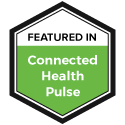The Biden administration is making sure that the upcoming open enrollment period is a successful one. Most recently the administration announced that it will be increasing funding for ACA navigators.
For the 2022 open enrollment, which begins November 1, the administration will be awarding $80 million to 60 ACA navigator organizations to facilitate the training of 1,500 navigators. These navigators will help individuals enroll in healthcare through one of the 30 federally operated ACA health exchanges. This is a sharp increase from the $10 million for 30 organizations for the 2021 tax year.
ACA navigators are responsible for helping individuals and families gain access to health coverage options through the various ACA health exchanges and Medicare/Medicaid. Navigators also assist with enrollment applications and help Americans receive ACA financial assistance, including cost-sharing reductions, and Premium Tax Credits (PTCs).
A list of the navigator organizations receiving the additional funding by state can be found on the 2021 CMS Navigator Awardees list.
HHS Secretary Xavier Becerra said, “By expanding our pool of Navigators, we will reach more underserved communities, and grow our network of trusted experts who can help people across the country navigate their health care options,” in a recent HHS press release. “Thanks to President Biden, health care is more affordable than ever on HealthCare.gov – and with this historic investment, we’ll be making it even easier for people to enroll in coverage through the Marketplace, Medicaid, and the Children’s Health Insurance Program.”
The increased funding is not the only addition ACA navigators will see. A proposed CMS rule is looking to boost ACA navigator duties, as well as extend the annual open enrollment period by 30 days. Specifically, the rule would allow CMS to “collect and dedicate additional revenue to fund consumer outreach and education through modest increases in user fee rates for issuers in Federally-facilitated Exchange states and State-based Exchanges on the Federal platform.” Also included in the expanded responsibilities is the reconciliation of PTCs.
Additional funding and duties will surely garner greater participation in ACA health exchanges, and as part of that, would help more individuals receive PTCs. As a reminder for employers, PTCs are the trigger for the IRS issuing Letter 226J penalty notices to employers identified as having failed to comply with the ACA’s Employer Shared Responsibility Provisions (ESRP) for a particular tax year.
With increased PTC distribution, employers may face greater IRS scrutiny for ACA Employer Mandate non-compliance.
Under the ACA’s Employer Mandate, employers with 50 or more full-time employees and full-time equivalent employees, known as Applicable Large Employers (ALEs) must:
- Offer Minimum Essential Coverage (MEC) to at least 95% of their full-time employees (and their dependents) whereby such coverage meets Minimum Value (MV); and
- Ensure that the coverage for the full-time employee is deemed affordable based on one of the IRS-approved methods for calculating affordability.
Failure to adhere to these two requirements could subject ALEs to Internal Revenue Code (IRC) Section 4980H penalties.
Biden’s focus to bolster the ACA continues to make historic achievements for American healthcare and employers should recognize that the law is here to stay. With IRS enforcement ramping up, employers should take the time to review their ACA processes ahead of the upcoming filing season.
Read the 2021 ACA Essential Guide for Employers to learn the ins and outs of your Employer Mandate responsibilities. If you need assistance with ACA reporting, furnishing, and monthly compliance, contact us to learn about our comprehensive ACA Complete solution.





